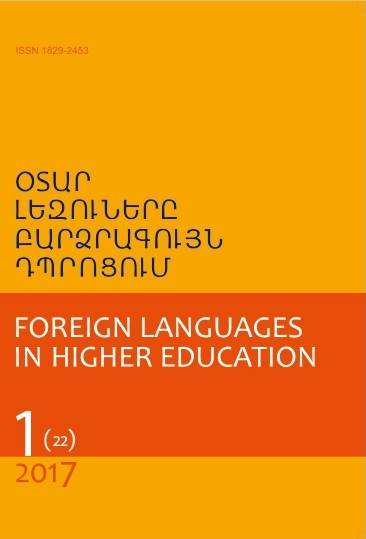NON-ABSOLUTE TENSE FORMS: CONTRASTIVE PERSPECTIVE
DOI:
https://doi.org/10.46991/FLHE/2017.21.1.122Keywords:
absolute and non-absolute tense forms, typological and differential features, correlative formsAbstract
The main aim of the paper is to reveal allomorphic and isomorphic features of non-absolute tense forms in Armenian and English. The analysis is performed on dichotomy language-speech: tense forms are studied in a definite context. Such an approach gives an opportunity to outline properties of verbal forms in “lively” speech. Firstly, are defined such concepts as grammatical tense, absolute tense, non-absolute tense and their correlatives in English. Secondly, are distinguished the patterning of non-absolute tense forms and their semantic-functional traits in the languages under study.
Downloads
Published
2022-01-11
Issue
Section
Linguistics
License
Copyright (c) 2017 Անահիտ ՀՈՎՀԱՆՆԻՍՅԱՆ, Մարիետա ԽԱՉԱՏՐՅԱՆ

This work is licensed under a Creative Commons Attribution-NonCommercial 4.0 International License.




